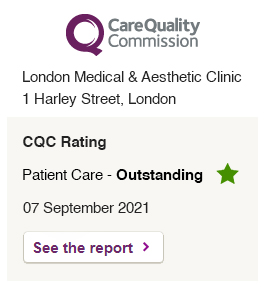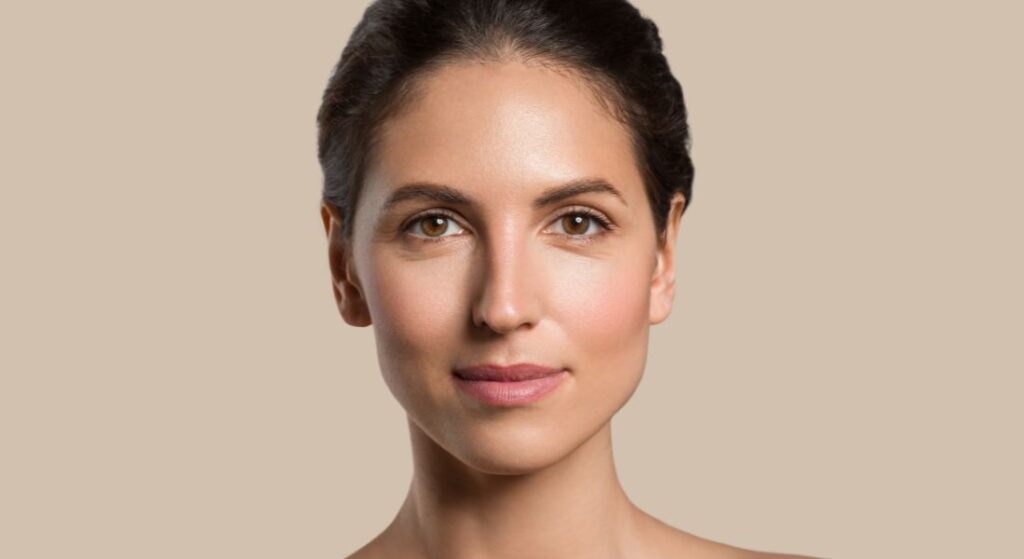
Sculptra is a popular injectable that works by stimulating your body’s own collagen production. It can restore lost facial volume and give you gradual, natural-looking rejuvenation that doesn’t scream “injectables.” Many people turn to Sculptra because they want long-term facial enhancement without looking overdone. But here’s the thing not everyone is a perfect fit for this treatment.
It’s really important to know whether Sculptra is safe for you before booking an appointment. Certain medical conditions, allergies, or even lifestyle factors can affect both the safety and the results of your treatment. In this guide, you’ll discover who might need to avoid Sculptra, why that is, and how you can figure out if it’s the right choice to help you achieve your facial rejuvenation goals. By the end, you’ll feel more confident about whether this treatment could work for you.
Medical Conditions That Could Affect Your Sculptra Safety
Before you consider Sculptra, it’s important to know that certain health conditions can make the treatment riskier or affect how well it works. Here’s what you should keep in mind:
1. Autoimmune Disorders
If you have conditions like lupus, rheumatoid arthritis, or multiple sclerosis, your body’s response to Sculptra could be less predictable. Since Sculptra works by stimulating collagen with poly-L-lactic acid (PLLA), your immune system may react differently, which could increase inflammation or affect the results.
2. Severe Skin Disorders
Do you have active eczema, psoriasis, or severe acne in the area you want treated? If so, Sculptra might not give you the best outcome. Injecting into inflamed or compromised skin can raise the risk of irritation, infection, or uneven results. It’s better to get your skin under control first.
3. Blood Clotting Issues
If you have a bleeding disorder or take blood-thinning medications, you might notice more bruising or prolonged bleeding after injections. Your clinician will need to carefully assess the risks before going ahead with treatment to keep you safe.
4. Severe Allergies
Although rare, some people can have allergic reactions to PLLA or lidocaine (which is often in the Sculptra formulation). If you have a history of hypersensitivity, you may need pre-treatment testing or Sculptra might not be the right choice for you.
Factors That Affect Whether Sculptra Is Right for You
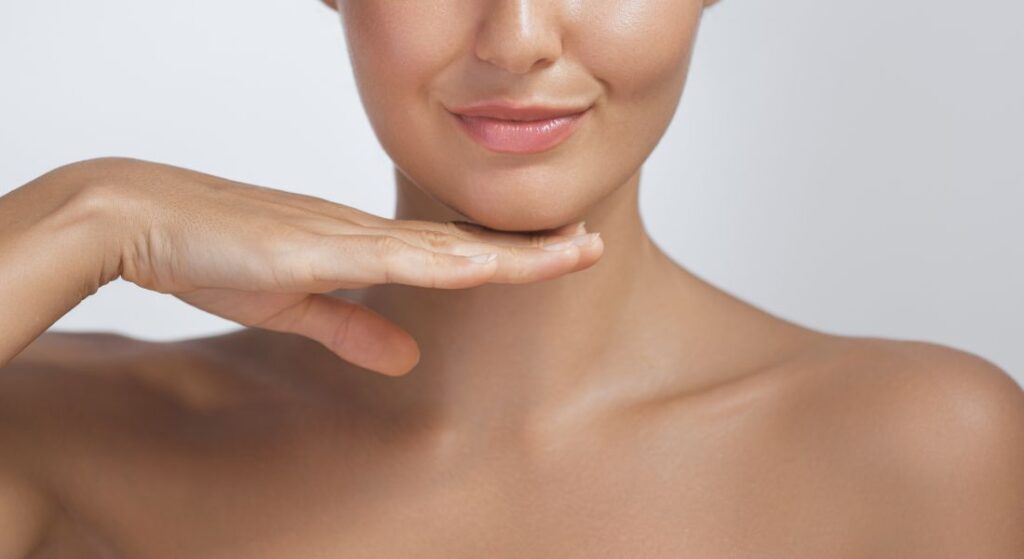
Even if you’re healthy, there are other things that can influence whether Sculptra is the best choice for your facial rejuvenation. Here’s what to consider:
1. Age and Skin Quality
If your skin is extremely loose or shows advanced signs of aging, Sculptra might not give the results you’re hoping for. That’s because the treatment relies on your body’s natural ability to produce collagen, and this ability naturally declines as you get older. While Sculptra can help restore volume and improve texture, it works best when your skin can respond actively to the treatment.
2. Previous Facial Procedures
Have you had extensive facial surgery or multiple filler treatments? If so, this could affect how Sculptra spreads under your skin. Overlapping treatments can sometimes lead to uneven results or the formation of small nodules, so it’s important to be upfront with your clinician about your full treatment history. This way, they can tailor the approach to your needs and minimise any risks.
3. Lifestyle Considerations
Your daily habits play a bigger role than you might think. Smoking or excessive sun exposure can reduce your skin’s ability to respond to collagen stimulation, which may make results less noticeable. Additionally, Sculptra isn’t a one-time treatment you’ll need follow-up sessions and proper post-procedure care to see the best long-term effects. If you can’t commit to these, you might not get the results you’re hoping for.
4. Other Practical Considerations
Even things like your overall health routine, diet, and skincare habits can influence outcomes. Staying hydrated, eating a balanced diet, and protecting your skin from sun damage all help your body respond better to treatment. The more proactive you are, the better your results are likely to be.
Situations Where Sculptra Might Not Be Right for You
While Sculptra is safe for many people, there are certain situations where it may not be suitable. It’s important to know these so you can make an informed decision and avoid potential complications.
– Pregnancy or Breastfeeding
If you’re pregnant or breastfeeding, Sculptra isn’t recommended. Safety for these groups hasn’t been established, so it’s better to wait. During this time, you can explore alternative non-invasive treatments that won’t pose risks to you or your baby.
– Active Infection in the Treatment Area
If you have a bacterial or viral infection where you want the injections, it’s best to hold off. Injecting into an infected area can spread bacteria or viruses and slow down healing, which could affect both safety and results.
– Unrealistic Expectations
Sculptra works gradually by stimulating your body’s collagen over weeks or months. If you’re hoping for instant, dramatic volume like some fillers provide, you might end up feeling disappointed. Understanding what the treatment can and can’t do will help you set realistic goals and get the results you’re expecting.
– Severe Allergies to Components
Although reactions are rare, some people can be sensitive to poly-L-lactic acid, lidocaine, or other additives in Sculptra. That’s why a thorough consultation with your clinician is essential to review your allergy history and make sure the treatment is safe for you.
How to Tell if Sculptra Is Right for You
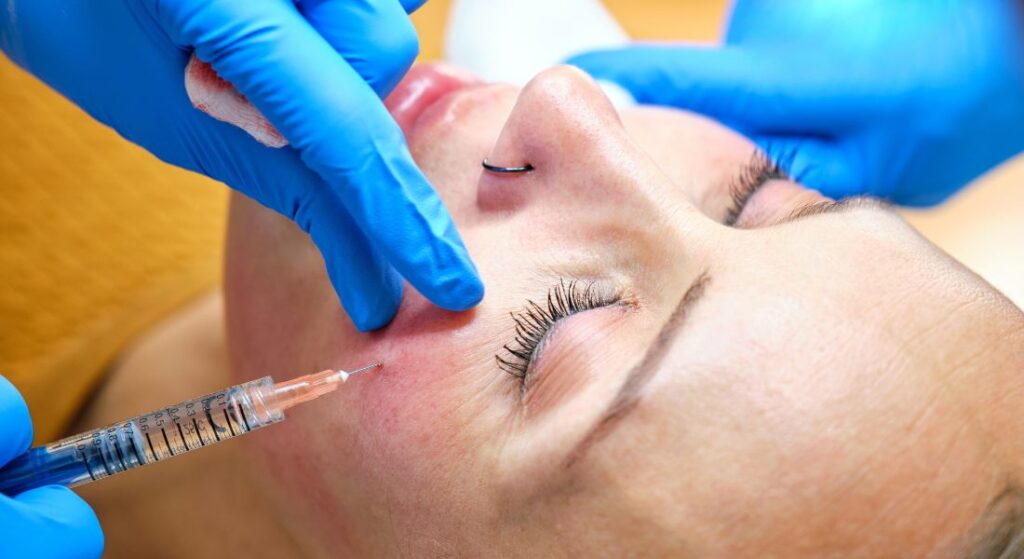
If you’re considering Sculptra, you probably want to know whether it’s the best choice for your goals. Here’s how you can figure it out:
Comprehensive Consultation
The first step is a detailed consultation with a qualified practitioner. This is your chance to discuss your medical history, allergies, and any previous facial treatments. Your clinician will evaluate whether Sculptra is safe for you and if it’s likely to give the results you want. Think of this as laying the foundation for a safe and effective treatment plan.
Skin Assessment
During your consultation, your practitioner will assess your skin’s elasticity, collagen production, and the areas where you’ve lost facial volume. This helps determine not only how many sessions you might need but also what kind of results you can realistically expect. It’s all about tailoring the treatment to your unique skin.
Review Your Goals and Expectations
Sculptra provides gradual, natural-looking rejuvenation rather than instant volume. Take some time to consider your goals and make sure they match what Sculptra can deliver. If you’re hoping for subtle, long-lasting improvement, you’re likely a good fit. But if you’re looking for dramatic, immediate changes, you might need to explore other options.
Consider Alternative Treatments
If Sculptra isn’t suitable for you, don’t worry there are other ways to achieve facial enhancement:
– Hyaluronic acid fillers can give you more immediate volume.
– Laser treatments can help tighten your skin.
– Non-invasive radiofrequency procedures are great for subtle contouring and improving texture.
By going through these steps, you can make a confident decision and set yourself up for safe, satisfying results.
Risks of Ignoring Candidacy Guidelines
– Nodules or lumps: Incorrect injection in unsuitable skin can cause small bumps.
– Infection or irritation: Patients with active skin conditions or immune compromise may experience complications.
– Unsatisfactory results: Without proper skin quality or compliance, results may be uneven or insufficient.
– Allergic reactions: Rare but possible if pre-existing sensitivities are ignored.
Following candidacy guidelines ensures safety and optimal results.
How to Prepare for Your Sculptra Treatment
Even if you’re a great candidate for Sculptra, preparing properly can make a big difference in your results and recovery. Here’s what you should do before your appointment:
1. Talk About Your Medications
Make sure your practitioner knows about any medications you take, especially blood thinners. These can increase the risk of bruising or bleeding, so your clinician may give you guidance on adjusting them safely before your treatment.
2. Avoid Certain Medications if Advised
Your practitioner might recommend avoiding anti-inflammatory drugs, like ibuprofen, for a few days before treatment. This can help reduce the chance of excessive bruising or swelling.
3. Keep Your Skin Clean and Healthy
Healthy skin heals better and reduces the risk of infection. Make sure the area being treated is clean, and follow any skincare advice your clinician gives you in the days leading up to your appointment.
4. Understand Your Treatment Plan
Ask your practitioner about the full treatment plan, including how many sessions you’ll need and the timeline for seeing results. Knowing what to expect helps you plan ahead and sets realistic expectations for gradual, natural improvement.
By taking these steps, you’ll give your Sculptra treatment the best chance to work effectively and safely, so you can enjoy smooth, long-lasting results.
What to Do if Sculptra Isn’t Right for You
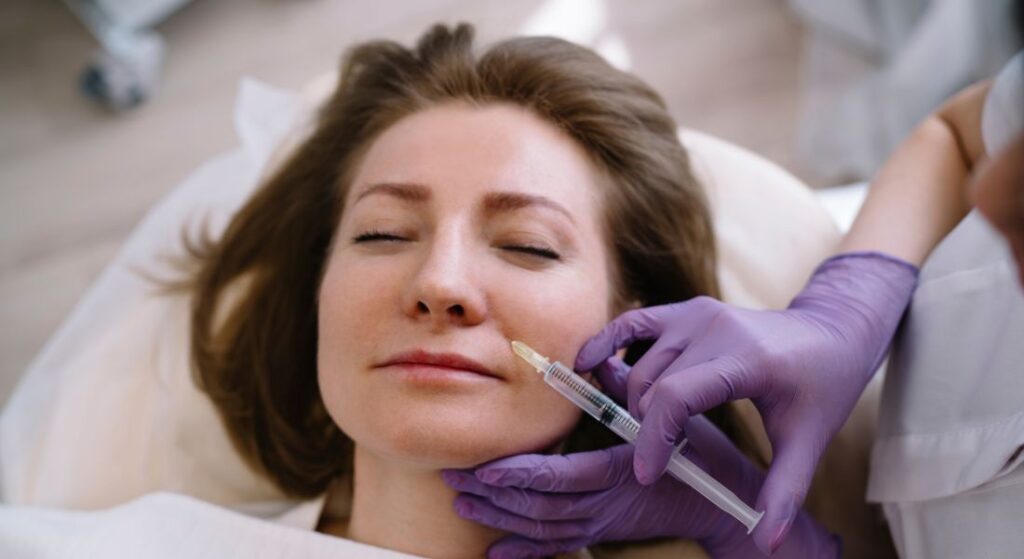
If it turns out that Sculptra isn’t the best fit for you, don’t worry you still have plenty of options to refresh and enhance your appearance. Not being a candidate for Sculptra doesn’t mean you can’t achieve your facial rejuvenation goals; it just means you’ll want to explore alternatives that suit your skin and lifestyle better.
Hyaluronic Acid Fillers
These fillers are great if you’re looking for more immediate volume and lift. Unlike Sculptra, which works gradually over several weeks, hyaluronic acid fillers can provide noticeable results right after treatment. They’re particularly useful if you want to smooth deep folds or restore fullness in specific areas of your face.
Thread Lifts
If you want a subtle lift without relying on collagen stimulation, thread lifts can be a good alternative. They use dissolvable threads to gently lift and contour your skin. The results are natural, and there’s minimal downtime, making it a practical option if you want noticeable improvement without invasive procedures.
Laser or Radiofrequency Treatments
Non-invasive skin tightening options like laser or radiofrequency treatments can help improve skin elasticity, texture, and tone over time. These treatments stimulate collagen in a different way than Sculptra and are ideal if you’re looking for gradual improvement with low risk.
Surgical Options
In cases where more significant volume loss or sagging is present, surgical procedures may be the most effective solution. While surgery is more invasive, it can provide long-lasting and dramatic results. Your provider can help you weigh the pros and cons based on your goals and health.
The key is working with a qualified provider who can review your unique situation and recommend safe, effective options. Even if Sculptra isn’t right for you, there are plenty of ways to achieve a refreshed, youthful look that aligns with your expectations and lifestyle.
Frequently Asked Questions About Sculptra:
1. How long does it take to see results from Sculptra?
When you start your Sculptra treatment, you won’t see immediate results like some other fillers. It works gradually by stimulating your body’s collagen over several weeks. Typically, you may notice subtle improvements within a month, with full results appearing around three to six months after your initial session. Because it’s a gradual process, many people find the changes natural and long-lasting.
2. Is Sculptra safe for everyone?
Sculptra is safe for many people, but not everyone is a good candidate. Factors like certain autoimmune disorders, severe skin conditions, allergies, or even lifestyle habits can affect both safety and effectiveness. A thorough consultation with a qualified practitioner is essential to determine whether Sculptra is appropriate for you and to minimize any potential risks.
3. How many treatment sessions are usually needed?
Most people need a series of sessions to achieve optimal results. Typically, three sessions spaced about four to six weeks apart are recommended, but your practitioner will assess your individual skin condition and goals to create a personalised plan. The number of sessions depends on factors like your skin’s elasticity, volume loss, and how your body responds to collagen stimulation.
4. Does Sculptra hurt?
Sculptra injections are generally well-tolerated, and most practitioners use a local anaesthetic or numbing cream to make the experience more comfortable. Some people may feel mild discomfort or pressure during the injections, but this usually passes quickly. After the treatment, you might notice minor swelling, redness, or tenderness in the treated area, which generally resolves within a few days.
5. How long do the results last?
Sculptra is designed to provide long-lasting, gradual improvement. Results typically last up to two years or more, depending on your age, skin quality, and lifestyle. Because it stimulates your own collagen, the effects are not temporary like some fillers that simply add volume; instead, your skin gradually becomes firmer and more youthful over time.
6. Can Sculptra be combined with other treatments?
Yes, Sculptra can often be combined with other treatments, but timing and placement are important. For instance, if you’ve had hyaluronic acid fillers, Botox, or laser treatments, your practitioner will plan the Sculptra injections carefully to avoid uneven results or complications. Combining treatments can enhance overall facial rejuvenation, but it’s best to discuss a coordinated approach during your consultation.
7. Are there any side effects I should expect?
Most side effects are mild and temporary, including minor swelling, redness, or bruising at the injection site. Rarely, small nodules or bumps may form under the skin, which usually resolve on their own or with minor correction. Serious complications are uncommon when you are evaluated properly and treated by a qualified professional.
8. What lifestyle factors can affect Sculptra results?
Your habits can have a significant impact on how well Sculptra works. Smoking, excessive sun exposure, poor skincare, or skipping follow-up sessions can reduce collagen stimulation and make results less noticeable. On the other hand, staying hydrated, protecting your skin from UV damage, and maintaining a healthy lifestyle can help your results last longer and look more natural.
9. Can Sculptra be reversed if I don’t like the results?
Unlike hyaluronic acid fillers, Sculptra cannot be dissolved with an enzyme because it works by stimulating collagen, not just filling volume. That’s why it’s crucial to have realistic expectations and a thorough discussion with your provider before starting treatment. If needed, minor adjustments can sometimes be made with additional treatments, but the changes are gradual rather than instantly reversible.
10. How do I know if Sculptra is right for me?
The best way to determine if Sculptra is suitable is through a comprehensive consultation. Your practitioner will review your medical history, assess your skin’s elasticity, examine areas of volume loss, and discuss your goals and expectations. This helps you understand what results are realistic and whether Sculptra or an alternative treatment will best meet your needs. Following this evaluation ensures you can make a safe, informed decision and achieve natural, lasting results.
Final Thoughts: Ensuring Safe and Effective Facial Rejuvenation
Sculptra provides a subtle, long-lasting way to restore facial volume, improve skin texture, and enhance contours naturally. Unlike some fillers that offer instant but sometimes artificial-looking results, Sculptra works gradually, allowing your body to build its own collagen for a refreshed appearance that develops over weeks and months.
It’s important to remember that achieving the best results depends on more than just the treatment itself. Your overall health, skin condition, and commitment to follow-up sessions all play a role in how well your skin responds. A personalised consultation with a qualified practitioner ensures your treatment plan is tailored to your facial structure, goals, and lifestyle, minimising risks and maximising results.
If you want personalised advice on Sculptra, you can contact us at the London Medical & Aesthetic Clinic to schedule a consultation with Dr Ayham Al-Ayoubi. With expert guidance, you can achieve natural, long-lasting facial rejuvenation that enhances your features beautifully.
References:
1. U.S. Food and Drug Administration (FDA), 2003. Sculptra® Aesthetic (injectable poly-L-lactic acid). Available at: https://www.accessdata.fda.gov/cdrh_docs/pdf3/p030050s002c.pdf
2. Carruthers, A., Carruthers, J., Hardas, B., & Kesteloot, R. (2005). Poly-L-lactic acid for correction of facial lipoatrophy in HIV patients: long-term safety and efficacy. Journal of the American Academy of Dermatology, 53(4), 575–585. Available at: https://pubmed.ncbi.nlm.nih.gov/19338874/
3. Goodier, M. (2020). Collagen biostimulatory fillers in facial aesthetics: mechanisms and clinical applications. Dermatologic Therapy, 33(6), e13965. Available at: https://www.ncbi.nlm.nih.gov/pmc/articles/PMC9233565/
4. Sickles, C.K., 2024. Poly-L-Lactic Acid. In: StatPearls [Internet]. Treasure Island (FL): StatPearls Publishing. Available at: https://www.ncbi.nlm.nih.gov/books/NBK507871/
5. Han, W.Y., Kim, H.J., Kwon, R., Kang, S.M. and Yon, D.K. (2025) ‘Safety and efficacy of poly-L-lactic acid filler (Gana V vs. Sculptra) injection for correction of the nasolabial fold: a double-blind, non-inferiority, randomized, split-face controlled trial’, Aesthetic Plastic Surgery, 49, pp. 3948. Available at: https://pubmed.ncbi.nlm.nih.gov/37626137/




